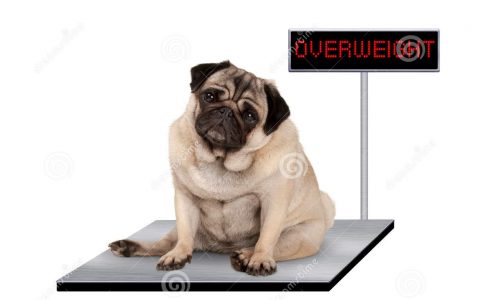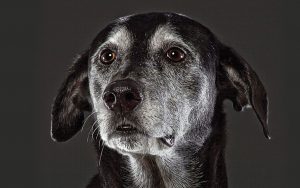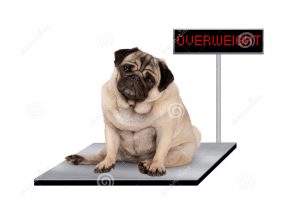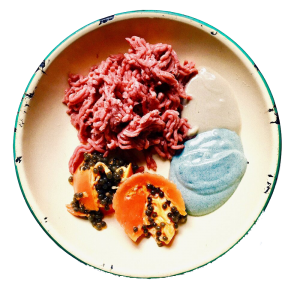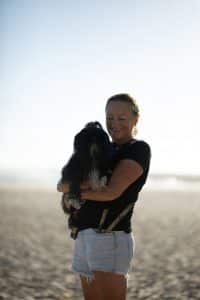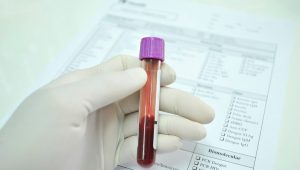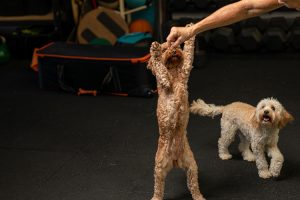Exercise speeds up metabolism and helps to expend calories. A lack of exercise creates boredom and overeating in both humans and dogs. Exercising skeletal muscle mass directly works the bone mass and helps maintain healthy bone density. Contrary to conventional thinking, exercise is important even if the dog is contending with disease, arthritis included. The endorphin secretions induced by regular and controlled exercise actually help alleviate pain. The alternative is a sedentary lifestyle that contributes to further tissue degradation. The only tissue that develops with a sedentary lifestyle is adipose tissue (fat), which actually increases the body’s inflammatory potential and worsens arthritis. Obesity increases the risk for diabetes, bone disease, cancer, depression, dementia, chronic inflammation and more. Regular activity improves metabolism to the point where fat management becomes easier and obesity can be reversed.
The owners of obese dogs may transfer their personal eating habits and diminished interest in their own health, onto their dog and the owners of overweight or obese dogs and cats can underestimate the body condition of their animals. Motivating humans to improve the body condition of their animal companions could be the gateway to recognition and to taking action in confronting their own overweight or obese state. It has been documented that overweight owners and their overweight companions can lose weight together, and that dogs can serve as social support during the weight loss period.
Teaching the pet owner on the dangers of obesity is important. Sometimes this is a touchy subject because some owners either don’t recognize their pets are overweight or don’t want to admit it. Having an overweight dog and doing everything else right (high quality food, healthy supplements etc.) is likely more detrimental than having a lean dog.
Have a look at the Body Conditioning Score Chart below and see if you can work out your dogs score. A visual assessment is not always acurate if your dogs has thick or long hair. Have your dog standing. Use your hands (palpate) to feel along the spinous processes (vertebrae). Hips bones and vertabrae become more prominant and may actually protude in dogs that are underweight, and may not be palable as the dog becomes obese. Obese dogs can also develop rolls of fat in the tail base region.



